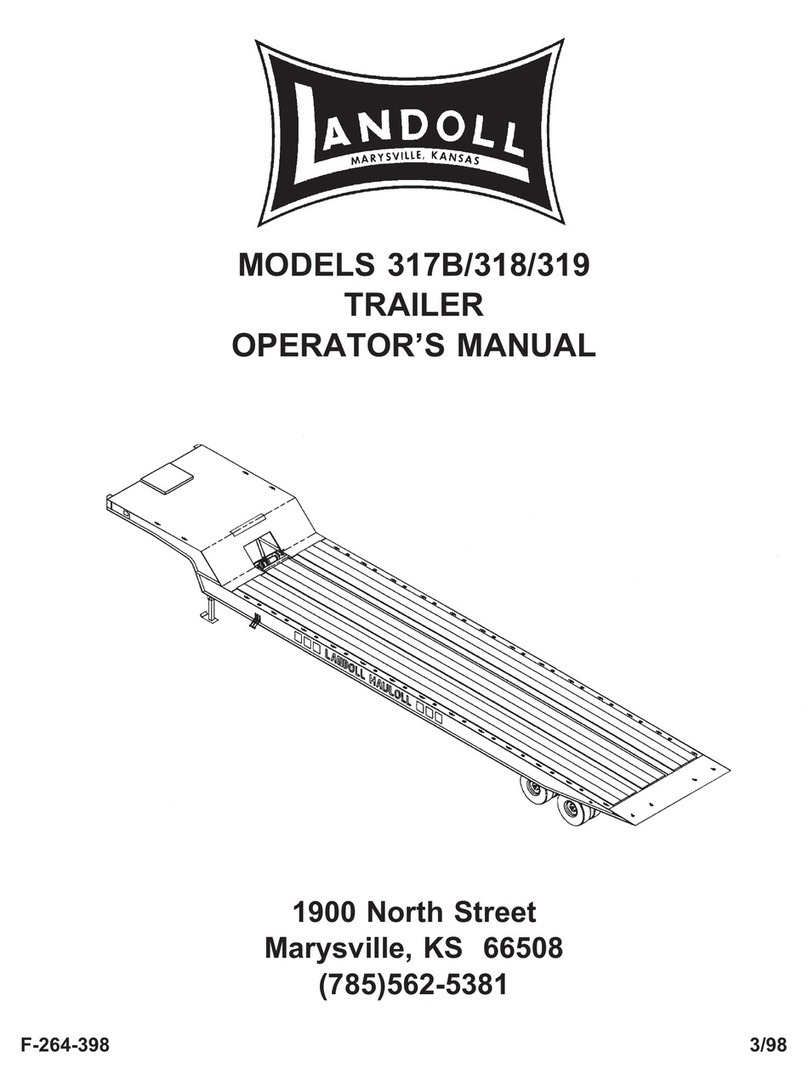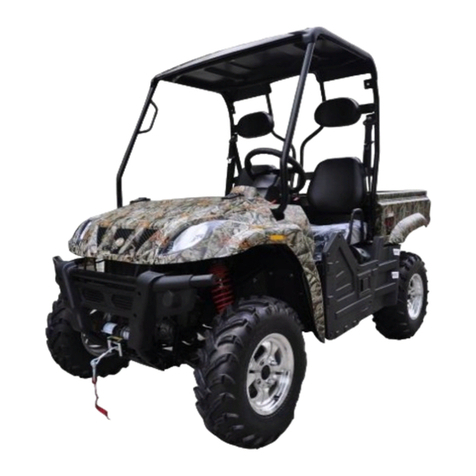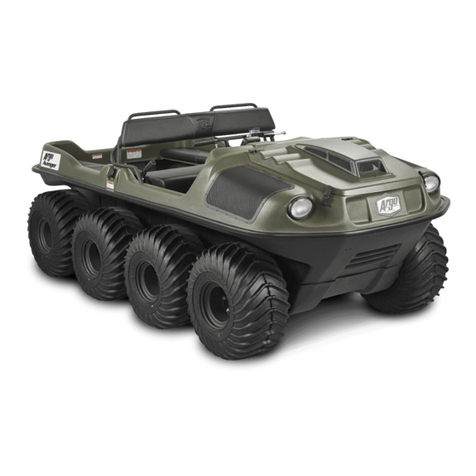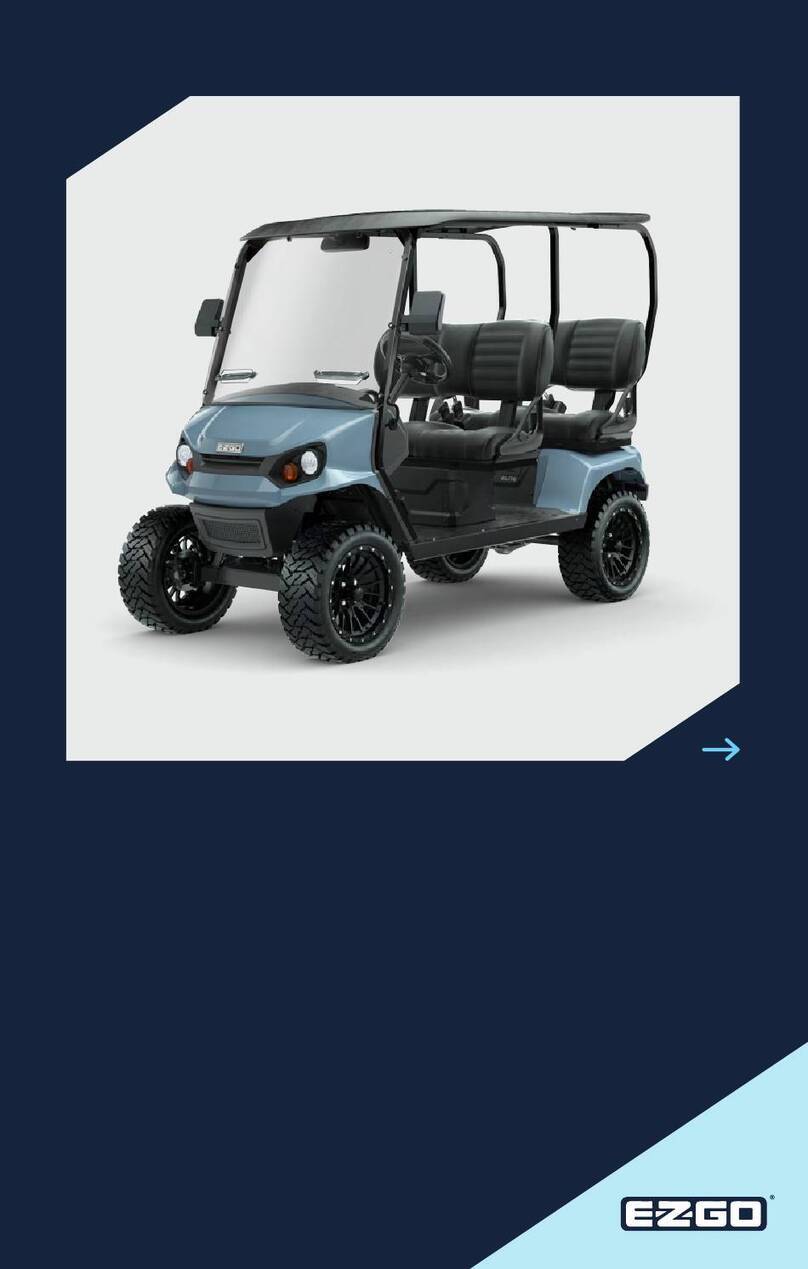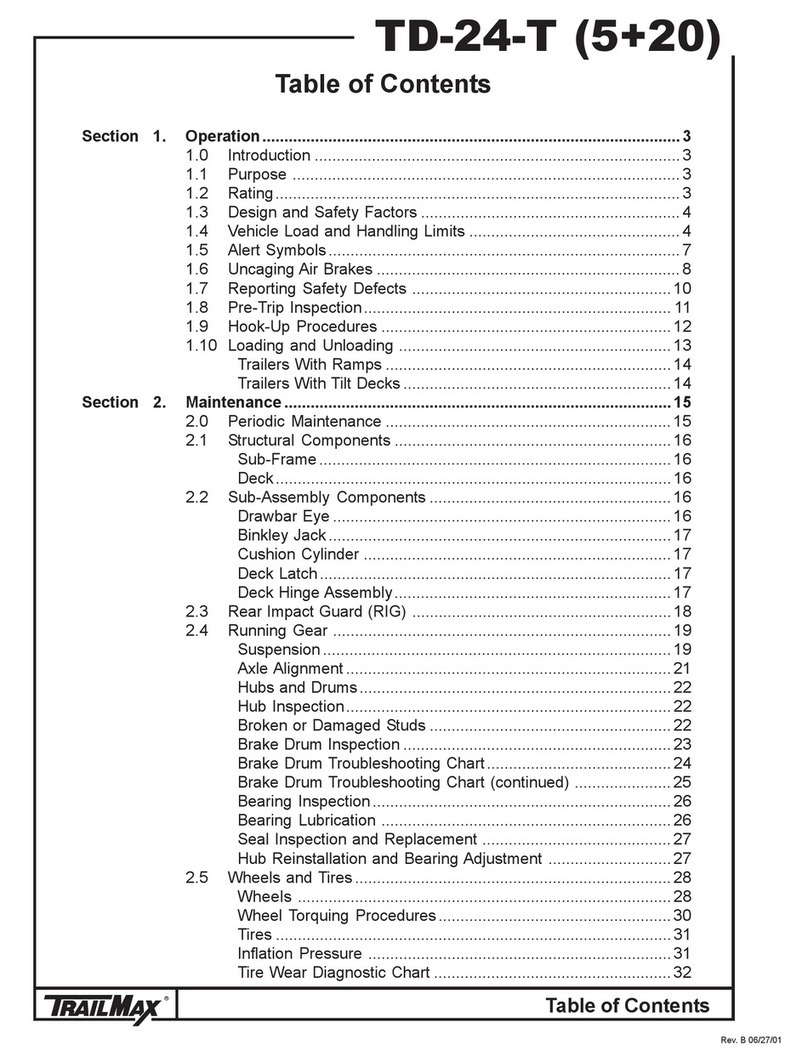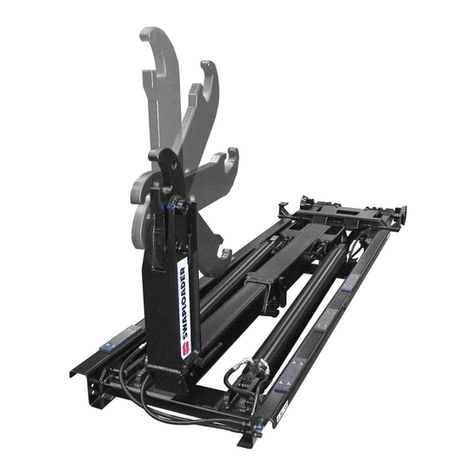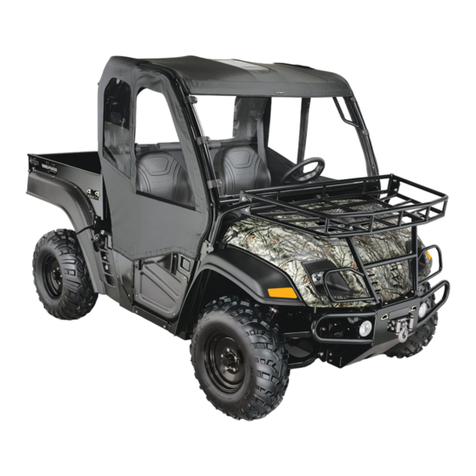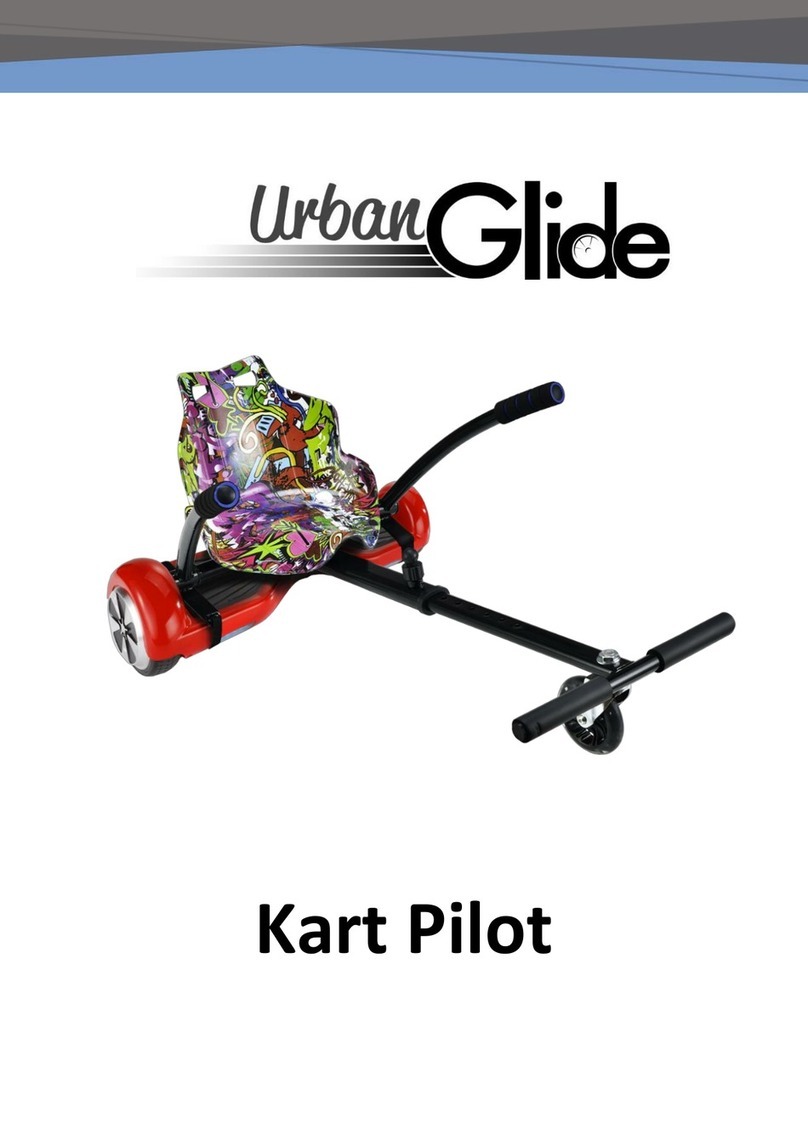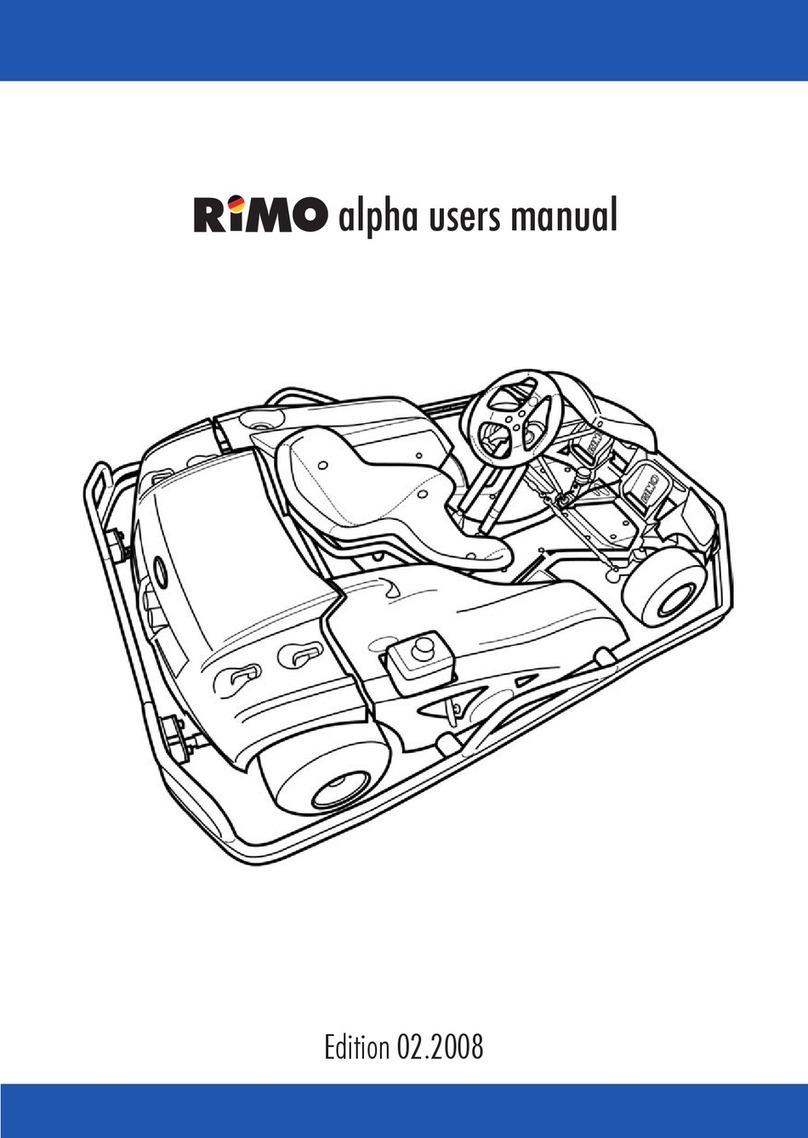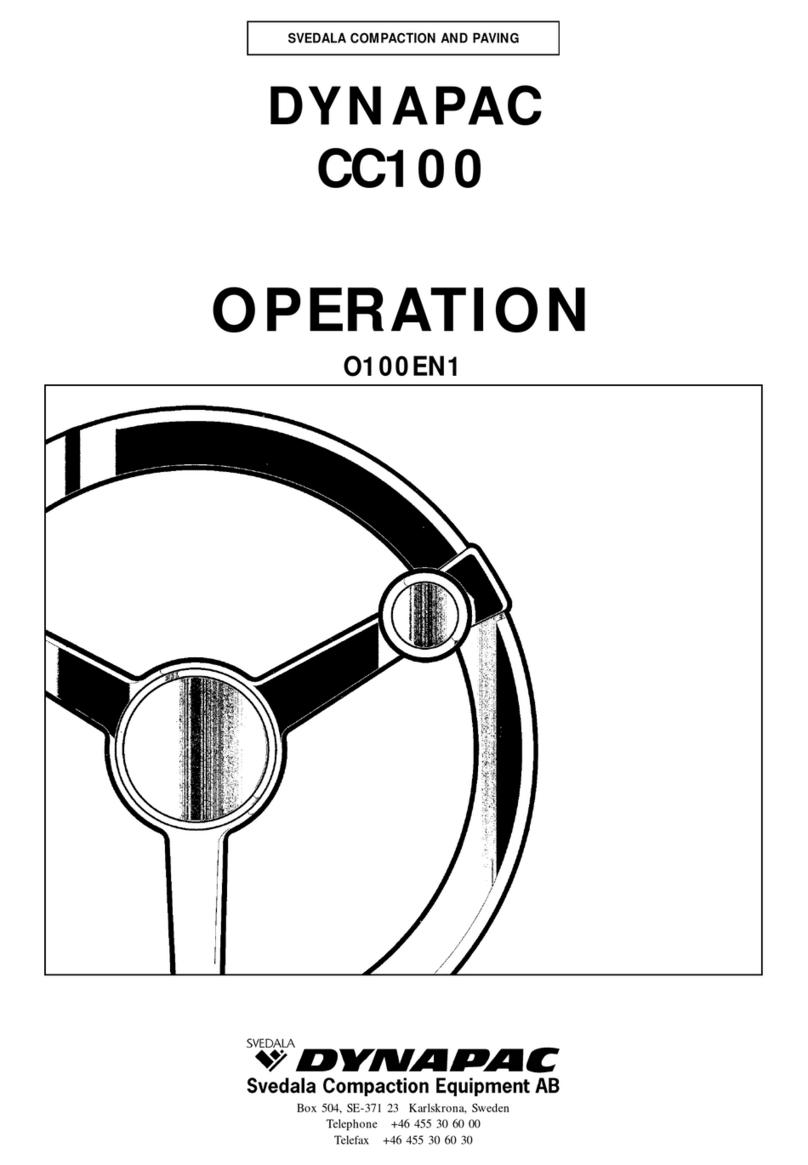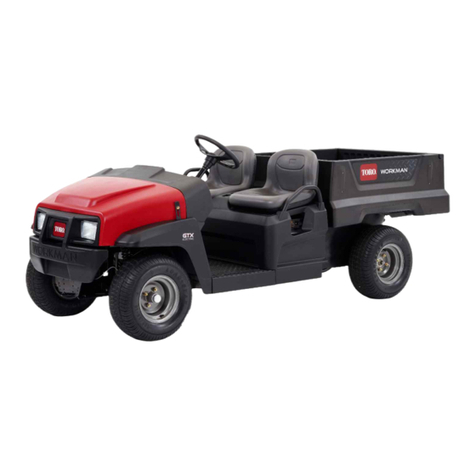Benford 2000 User manual

Benford Ltd., Central Boulevard, ProLogis Park, Coventry CV6 4BX, England
Tel.: +44 (0)2476 339400 - Fax: +44 (0)2476 339500
CALIFORNIA
Proposition 65 Warning
Diesel engine exhaust and some of its constituents
are known to the State of California to cause
cancer,birthdefects, andotherreproductiveharm
INSTRUCTION
2000 - 9000 (ITL)
Mechanical Drive Only
4.W.D Dumper Straight & Swing Skip
Publication No. B9507E-5 June 2004

iSafety Notes
June 2004 - 9507ES/5
General Safety Notes
LEFT and RIGHT HAND
All references in this manual to LEFT and
RIGHT are as viewed from the Operating
Position (Drivers Seat)

ii
Safety Notes
June 2004 - 9507ES/5
General Safety Notes
This Manual is Designed as a Guide to the Machines Controls and Maintenance
- IT IS NOT A TRAINING MANUAL
This manual must not be removed from the machine and
shouldbekeptinauseablecondition.Ifthemanualbecomes
unusable,newcopiesmaybeorderedfromthemanufacturer
by quoting the Publication Number.
ALLusersofthemachinemustbefullytrainedinitsoperation
andauthorisedtousethemachine.Consultthemanufacturer
or dealers for details of training courses.
Modifications to this machine and/or changes to the
specification which have not been approved by the factory,
willinvalidatethemachineswarrantyandpossiblyyourown
insurance cover.
Allthetimeyouareworkingonorwiththemachineyoumust
bethinkingwhathazardstheremaybeandhowtoavoidthem.
If you are unsure of anything concerning the machine or the
job - ASK.
DO NOT ASSUME ANYTHING

iii Safety Notes
June 2004 - 9507ES/5
WARNING
Observe the Following Points for Your Safety and Protection
Operatorsandmaintenance personnelmustalwayscomplywith thefollowingsafetyprecautions.These precautionsaregiven
hereforyoursafety.Reviewthemcarefullybeforeoperatingthemachineandbeforeperforminggeneralmaintenanceorrepairs.
Supervising personnel should develop additional precautions relating to the specific work area and local safety regulations.
zBefore operating the machine ensure you have had proper training and are fully conversant with the machine and
itsoperation-IfinDoubtASK!
zReadthisinstructionmanualcarefullybeforeoperatingthemachine.Ensurethisinstructionmanualiskeptwiththe
machineatall times and is in good condition - replace themanualimmediatelyif it becomes dirty, damaged or lost.
zDecals are fitted to the machine for safety purposes and MUST be replaced immediately if they are unreadable or
lost.Ifthemachine isrepairedandpartshave beenreplaced onwhichdecals werefixed ensurenewdecals arefitted
before the machine is put into service.
zAlwaysmakesurethereisadequateventilationaroundthemachine.Neverruntheengineinanenclosedareawithout
good ventilation or next to combustible materials.
zStop the engine before refuelling, if there is a spillage mop it up and do not start the engine until it is safe again.
zTheexhaustgetsextremelyhot.Donotplaceanythingontopofitandkeepallcombustiblematerialsclear.Donot
attempt any maintenance on a hot engine.
zBe familiar with all prohibited work areas such as excessive slopes and dangerous terrain conditions.
zCheck your local laws and regulations, the engine may require a spark arrester etc.
zDo not inspect or clean the machine with the engine running.
zBefore carrying out maintenance on the hydraulic system ensure the hydraulic fluid is cool and there is no residual
pressurein the hydraulic circuit-hydraulicfluidleakingunderpressurecanpenetratetheskin.
zMake sure you, and anyone else who uses the machine, have been trained to operate it safely.
zA hard hat, safety boots, safety glasses and reflective clothing must be worn at all times.
zEstablish a training programme for all operators to ensure safe operation.
zDo not operate the machine unless thoroughly trained and are physically and mentally fit.
zDo not operate the machine if it is damaged, improperly adjusted or not completely and correctly assembled.
zDo not operate the machine if you are unfit to do so because of alcohol or drugs etc.
zBefore performing any maintenance on the machine, place a warning tag on the machine to prevent accidental start-up.
Put the locking bar into position to prevent the front and rear chassis moving and creating a crushing zone.
zThe air taken in by the oil cooler fan, if fitted, must be free of dust and debris.
zEnsure the ROPS/FOPS is not damaged.
zWhen loading a dumper skip, no person should be on the machine.
zDo not carry passengers.
zKeep footplates and steps free from dirt, oil, snow, ice etc.
zCheck seat belts daily.
zDo not remove the radiator cap when the engine is hot. Do not add coolant to a hot engine.
zAlways park the machine safely on firm, level ground where it will not cause an obstruction or danger - chock the
wheelsifnecessary.DONOTLEAVETHEENGINERUNNINGorthestartkeyinthestartswitch.
zBefore taking the machine on public roads ensure the machine complies with all road traffic regulations and obey
alldrivinglaws.
zTyreChangesandrepairstoPuncturedTyresMUSTonlybecarriedoutbyfullytrainedOperativesusingthecorrect
equipment. The manufacturer of this machine recommends a competent firm is employed to carry out these tasks.
zIfthemachineshouldrollover,theOperatormustgripthesteeringwheelfirmlyallowingtheseatbelttorestrain
themintheseatuntilthemachinecomestorest.
General Safety Notes

iv
Safety Notes
June 2004 - 9507ES/5
General Safety Notes
Hydraulic Fluid
Fine jets of hydraulic fluid under pressure can penetrate the skin.
Donotuseyourfingerstocheckforsmallleaksorexposeuncovered
areas of your body to leaks.
Check for leaks using a piece of cardboard.
IfSkinisPenetratedwithHydraulicFluid,GetImmediateMedicalHelp
Fluid Levels
Ensure the Machine is on Level, Stable
Ground when Checking ALL Fluid Levels
Frozen Battery Electrolyte
Do Not Use a Machine with Frozen Battery Electrolyte
zBatteries with frozen electrolyte may explode if used or
charged.
zNever 'jump start' a machine with a frozen battery.
zTo help prevent freezing, keep the battery fully charged.
Fires
Do Not Use Water to Extinguish a Machine Fire
Usingwatertoextinguishanoilfirecouldspreadthefireorgiveyou
a shock from an electrical fire.
Use a carbon dioxide, dry chemical or foam extinguisher whilst
waiting for the fire brigade.
Keep the fire extinguisher safely and have it checked regularly.
Water Cooled Engines
Watercooledsystemsoperateunderpressuretoincreasetheboiling
point of the coolant. Therefore, the coolant temperature may be
greater than boiling water - 100ºC.
Never Maintain Cooling System when the Engine is HOT!
BEWARE
of Hydraulic Oil
Under Pressure

vSafety Notes
June 2004 - 9507ES/5
Lubricants
It is essential that anyone concerned with lubricants read and
understand the following text.
Hygiene
Lubricants are not a health risk when used correctly for their
intended purposes.
However, excessive or prolonged skin contact can remove the
natural fats from the skin, causing dryness and irritation.
Low viscosity oils are more likely to do this, therefore particular
careisnecessaryinhandlingusedoilswhichcanbedilutedwithfuel
contamination.
Whenever handling oil products, maintain good standards of care
plus personal and plant hygiene.
For details of these precautions we advise you to read the relevant
publications issued by your local health authority.
Storage
ALWAYS keep lubricants out of reach of children.
NEVER store lubricants in open or unlabelled containers.
Handling Oil
New Oil
There are no special precautions needed for the handling or use of
new oil other than the normal care and hygiene practices.
Old Oil
Usedenginecrankcaselubricantscontainharmfulcontaminants.In
laboratorytestsitwasshownusedpetrolengineoilscancauseskin
cancer.
Observe the following precautions.
A. Avoid prolonged,excessiveorrepeatedskin contact withused
engineoil.
B. Apply a barrier cream to the skin before handling used engine
oil.
C. Note the following when removing engine oil from the skin.
Wash skin thoroughly with soap and water. Using a nail brush
will help.
Use special hand cleansers to help clean dirty hands.
Never use petrol, diesel fuel or kerosene.
Avoid skin contact with oil soaked clothing.
Do not keep oily rags in pockets.
Wash dirty clothing before reuse.
Throw away oil soaked shoes.
First Aid - Oil
Swallowing
If oil is swallowed, do not induce vomiting.
GetMedicalAdvice
Old
In the case of excessive skin contact, wash with soap and water.
New
In the case of eye contact, flush with water for 15 minutes. If the
irritation persists, get medical attention.
Spillage
Absorbwithsandoralocallyapprovedbrandofabsorbentgranules.
Scrape up and dispose of in a chemical disposal area.
Fires
Extinguish with carbon dioxide, dry chemical or foam.
Lubricants - Health and Safety

vi
Safety Notes
June 2004 - 9507ES/5
WARNING
Observe the Following Points to Prevent Damage to the Machine
zAlwaysreplacehoses,couplersandotherpartswithpartssuppliedorrecommendedbyBenford-NEVERUSESPARE
PARTSOFINFERIORSPECIFICATION.
zNever allow unqualified people to perform repairs on the machine.
zNever overfill the engine oil or fuel tank.
zIfahosebursts,stop the engine immediately - ALWAYSreplacewithahoseofthecorrectspecification.
zDo not start the engine if you cannot see the hydraulic oil level in the sight gauge.
zFollow the engine starting instructions in this manual and on the machine.
zIfyou see oil leaking report it andgetit fixed immediately.
zMake sure the correct fuel, oils and grease is used.
zDo not operate the machine unless it is safe to do so. Remember to check for overhead obstructions while driving.
zNever use the machine for purposes other than those it was manufactured for.
zAlways ensure workmates are aware of your work plan.
zEnsure all tyres are serviceable before using the machine.
zNever cross inclines greater than those stated in this manual.
zNever drive the machine on to unstable ground or close to trenches, holes etc.
zDo not operate the machine if it is damaged, improperly adjusted or not completely and correctly assembled.
zEstablish a training programme for all operators to ensure safe operation.
SAFETY SYMBOLS
Safety symbols are used in these instructions to bring attention to actions that may cause personal injury or damage to
the equipment. Always observe these symbols, they are included for your safety and for the protection of the power unit.
Thissymbolidentifiesanactionthatrequiresparticularattentionand/orcare.
Thissymbolidentifiesanactionthatmaybedangerousifperformedincorrectly.
Thissymbolidentifiesatopicwherefurtherinformationisavailable.
Additional Safety and Warning Notes are Included in the Following Manual Pages
General Safety Notes

vii Safety Notes
June 2004 - 9507ES/5
Warning Transfers Used on the Dumper
General Safety Notes
Before operating the machine, Read and Understand the
Instruction Manual supplied with the machine
Refer to Manual Sections: Driving Controls, Operating
Instructions
Stay a safe distance away from the machine
Refer to Manual Sections: General Safety
Stay a safe distance from crushing zones
Refer to Manual Sections: General Safety
Always Use Seat Belt when Operating the Machine
Refer to Manual Sections: Seat Operating Instructions
For safe use of machines on gradients, see
instruction manual for skip uses
Refer to Manual Sections: Gradients

viii
Safety Notes
June 2004 - 9507ES/5
Warning Transfers - continued
Read the Instruction Manual before operating the machine and
ALWAYS remove the start key before performing ANY maintenance
Refer to Manual Sections: Delivery Checks, Maintenance Secure lifting cylinder with the locking device before
performing maintenance in the skip area
Refer to Manual Section: Skip Prop Instructions, Maintenance
Swing Skip control valve
Refer to Manual Sections: Operating
Instructions, Swing Skip Elevation and Slewing
Straight Skip control valve
Refer to Manual Sections: Operating
Instructions, Straight Skip Elevation
Do not ride on machine except in supplied seat and
never expose body to high pressure fluid leaks
Refer to Manual Section: Working on the Hydraulic
System, Maintenance
Engage the articulation lock before lifting machine
Refer to Manual Sections: Transportation - Crane
General Safety Notes

ix Safety Notes
June 2004 - 9507ES/5
Warning Transfers - continued
Engine noise level
Refer to Manual Section: Technical Specification, Noise Levels
Tyre Pressures
Refer to Manual Section: Technical Specification,
Tyre Specification/Capacity/Pressures/Wheel Torques
General Safety Notes

x
Safety Notes
June 2004 - 9507ES/5
General Safety Notes
Fatigue and finite life problems associated with
welded products such as ROLL OVER PROTECTIVE
STRUCTURES (ROPS).
Operational experience of ROPS indicates that equipment
of this type may become structurally inadequate and has
even failed during normal operations because users have
not inspected and maintained this equipment. Although
ROPS seem to be relatively maintenance-free, regular
periodic inspections to ensure ROPS are damage free and
thus capable of functioning in a rollover cannot be over
emphasized. Through periodic inspections, cracks, loose
bolts, damage, and other normal wear and tear related
problems can be eliminated before they become serious.
Proper inspection and maintenance procedures can
ensure that ROPS will perform the lifesaving function they
are designed for and expected to do.
Introduction
There are in-service factors which tend to degrade a ROPS/
FOPS systems energy absorbing or load carrying
capability.
A few of these factors are:
zStructural damage from vibrations and/or loadings
during some operations.
zA corrosive environment
zContinued use of the machine after rollover or accident
involving structural damage
zUnauthorized modification
zWorn or deteriorated isolation mounts
zBolt replacement with less than the correct grade or
neglect in maintaining proper bolt torque
zImproper installation
Any of these factors can cause an unsafe condition to exist
as well as exposing all concerned parties to liability
damages. The following guidelines will be helpful if
followed.
Attachments and/or Modifications
Generally ROPS/FOPS structures are not intended as
external load carrying members and must not be used to
mount attachments such as pull hooks, winches, side
booms, etc. without the manufacturers approval.
Non external load transmitting attachments such as
mirrors, fans, heaters, lights, etc. should be installed
following the manufactures guidelines. Typically these
attachments are located in non critical areas such as roof
sheets, enclosure sheet metal, or the middle portion of the
ROPS legs.
Modifications to basic design such as increasing canopy
height, or relocating ROPS legs should be avoided as
recertification is required.
Maintenance
Inspection - A scheduled, frequent visual check of mounting
hardware by operation or service personnel is recommended.
As most ROPS are different and function in different service
environments, no specific inspection interval can be
recommended. Inspection in conjunction with regular service
intervals is suggested. The inspection should check for:
zWorn, damaged or missing resilient mounts. Excessive
motion or rattling during operation are indications of a
problem. The mounts should be disassembled and
repaired if required.
zLoose, missing or damaged mounting hardware (bolts, nuts,
washers, etc.). Bolts should be checked for proper torque.
zCracks in ROPS/FOPS structure and mounting system.
The machine should be cleaned and disassembled as
necessary to allow inspection for cracks in the structure
and mounting system. Cracks are usually associated
with weld details and usually show as a line of rust
before it will be clear as a crack. Rust lines should be
taken as indications of cracks and verified by inspection
following the manufacturers procedures. Only some
cracks will badly affect the ROPS/FOPS function.
Cracks in enclosure sheet metal generally are not
structurally important. The manufacturer can identify
the appropriate measures. If in doubt, consult the
manufacturer.
zWater drainage paths. The check should verify clear
water drainage paths so that entrapped water will not
freeze and crack or deform the structure.
zCorrosion. Extensive paint peeling and rusting should
be noted and corrective action taken.
zSeat Belt. The presence and operability of a seat belt
should be noted. The belt should be clean,free of dirt
and grease and the latch should function smoothly.
zOther inspection. The structure should be inspected
following a rollover, collision or fire.
Repair
zReplace missing or damaged hardware with the
manufactures specified hardware. Re-torque all loose
threaded fasteners to the manufacturers specifications.
zReplace worn or damaged resilient mounts to prevent
further damage to the mounting surfaces and to prevent
more severe vibration problems.
zDetermine the repairability of cracks in ROPS/FOPS
structures on the basis of the crack details and effect on the
particular design. The manufacturer must be consulted at
this step. Some general rules which may be helpful are:
zEnclosure sheet metal cracks are repairable.
zSmall cracks may be repairable. Consult manufacturer.
zIf damaged by rollover, collision or fire consult manufacturer.
zIn all cases, when doubt exists; consult manufacturer.
Roll Over Protective Structures - ROPS

xi Safety Notes
June 2004 - 9507ES/5
Important Facts about Seat Belts
The potential exposure of this seat belt to severe environmental conditions make it crucial to inspect the seat belt system
regularly. It is recommended that the seat belt system is inspected at least once a year or more often if the vehicle is
exposed to severe environmental or vocational conditions, Any seat belt system that shows cuts, fraying, extreme or
unusual wear, significant discoloration due to UV exposure, dusty-dirty conditions, abrasion to the seat belt webbing, or
damage to the buckle, latch plate, retractor, hardware or any other obvious problem should be replaced immediately.
Once replacement of the seat belt has been determined, be certain that it Is only replaced with the original equipment
manufacturer recommended replacement seat belt. See your authorized spares and service centre for replacement. Your
restraint system has been developed and tested specifically for your machine.
If the inspection indicates that any part of the seat belt requires replacement, the entire belt must be replaced. It is vitally
important that all components be mounted back in the same position as the original components which were removed. This
will maintain the design integrity of the mounting points for the seat belt assembly.
Seat Belt Maintenance Guidelines
WARNING
zFailure to properly inspect and maintain a seat belt can cause serious injury or loss of life in the event of an accident.
zIt Is critical that any time the machine is involved in an accident, the entire seat belt system must be replaced.
zThe seat belt should be considered to have a finite life and must be replaced as needed throughout the life of the
machine. The belt must be inspected for needed maintenance at least once a year or more often if exposed to
severe environmental or vocational conditions.
zIf replacement of any part of the seat belt is indicated through maintenance guidelines below, the entire belt must
be replaced, both retractor and buckle side.
Maintenance Guidelines
The following maintenance guidelines detail how to
Inspect seat belt for “cuts, fraying, extreme or unusual
wear of the webbing, etc., and damage to the buckle,
retractor, hardware or other factors” which indicate that
seat belt replacement is necessary,
1 Check the webbing. Pull the webbing completely out of
the belt retractor and inspect the full length of the
webbing for cuts, wear, fraying, dirt and stiffness. If a
belt shows any cuts, fraying, extreme or unusual wear,
the system should be replaced.
2 Check the buckle and latch for proper operation and to
determine if latch plate is excessively worn, deformed
or buckle is damaged or casing broken.
3 Check retractor web storage device operation by
extending webbing to determine it locks properly and
that it spools out and retracts webbing properly.
4 Check web in areas exposed to ultraviolet rays from the
sun or extreme dust or dirt. If the original colour of the
web in these areas is extremely faded and/or the web
is packed with dirt, the physical strength of this web
may have deteriorated. If this condition exists replace
the system.
IMPORTANT
Follow Maintenance Guidelines 1-4 to properly
Inspect seat belt and tethers to determine if
replacement Is necessary.


June 2004 - 9507EI/5
1-1 2 to 9 Tonne Dumper Instruction Manual
Contents
2 and 3 Tonne Dumpers - Straight Skip .................................................................................................................... 2
2, 3, 4, 5 and 6 Tonne Dumpers - Swing Skip ........................................................................................................... 3
4, 5, 6, 7 and 9 Tonne Dumpers - Straight Skip ........................................................................................................ 4
Introduction ............................................................................................................................................................... 5
General Description ................................................................................................................................................... 5
Safety ........................................................................................................................................................................ 6
Operational Safety Points .......................................................................................................................................... 6
Safe Operation Decals ............................................................................................................................................... 7
Delivery Checks ......................................................................................................................................................... 8
Transportation ........................................................................................................................................................... 8
Using Dumper as a Towing Vehicle ........................................................................................................................... 9
Towing - Torque Converters Models .......................................................................................................................... 9
Driving Controls ....................................................................................................................................................... 10
Steering Column Control Variations ........................................................................................................................ 11
Dashboard Controls - Machines Fitted with ITL Gearbox ........................................................................................ 12
Dashboard Controls - Machines Fitted with Turner Gearbox ................................................................................... 12
2000-3000 Dumpers Only ........................................................................................................................................ 13
Circuit Breakers ....................................................................................................................................................... 13
Audible Warnings .................................................................................................................................................... 13
Seat Operating Instructions ..................................................................................................................................... 14
Start Inhibitors - 2 and 3 Tonne Machines .............................................................................................................. 14
Start Inhibitors - 4, 5, 6, 7 and 9 Tonne Machines .................................................................................................. 14
Starting the Engine .................................................................................................................................................. 15
Stopping the Engine ................................................................................................................................................ 15
Using Clutch and Gearbox ....................................................................................................................................... 16
Torque Converter & Shuttle Gearbox ...................................................................................................................... 17
Steering ................................................................................................................................................................... 18
Stopping the Dumper .............................................................................................................................................. 19
Parking Brake .......................................................................................................................................................... 19
Handbrake Warning ................................................................................................................................................ 19
Gradients ................................................................................................................................................................. 20
Skip Uses ................................................................................................................................................................. 21
Swing Skip Elevation and Slewing .......................................................................................................................... 22
Anti Slew Skip Lock ................................................................................................................................................. 22
Straight Skip Elevation ............................................................................................................................................ 22
How the Hydraulics Function ................................................................................................................................... 23
Straight Skips .......................................................................................................................................................... 23
Swing Skips ............................................................................................................................................................. 25
ROPS - Rectangular Section 9000 Only .................................................................................................................. 25
ROPS - Round Section 2000 to 9000 ...................................................................................................................... 26

June 2004 - 9507EI/5
1-2
2 to 9 Tonne Dumper Instruction Manual
Machine Data
2 and 3 Tonne Dumpers - Straight Skip
Tow
Bracket
Skip Seat
Support
Engine
Canopy
Seat
Gear
Lever
Steering
Wheel
Handbrake &
Skip Control
Lever
Instruction
Manual Holder
Centre Pivot
Engine Stop
Lister Only
Propshaft
Propshaft Rear Axle
Front Axle
Battery
Steer Ram
Skip Pivot
Engine
Front Chassis
Skip Pivot
Transfer
Box
Accelerator
Pedal
Brake
Pedal
Brake
Master
Cylinder
Fuel Tank
Filler
Filler /
Dipstick
Gearbox
Rear Chassis
Hydraulic
Tank Filler
Clutch Pedal
Front Axle Filler
& Drain Plug
Skip Ram Rear Axle
Filler &
Drain Plugs

June 2004 - 9507EI/5
1-3 2 to 9 Tonne Dumper Instruction Manual
Machine Data
2, 3, 4, 5 and 6 Tonne Dumpers - Swing Skip
Battery
Steer Ram
Slew Ram
Skip Ram
Skip Pivot
Slew Ring
Engine
Front Chassis
Transfer
Box
Accelerator
Pedal
Brake
Pedal
Brake
Master
Cylinder
Fuel Tank
Filler
Filler /
Dipstick
Skip Pivot
Slew Ram
Clutch Pedal
(2 & 3 Tonne Only)
Gearbox
Rear Chassis
Hydraulic
Tank Filler
Front Axle Filler
& Drain Plug
Rear Axle
Filler &
Drain Plugs
Engine
Canopy
Gear
Lever
Steering
Wheel
Seat
Handbrake & Skip
Control Lever
Seat
Support
Tow
Bracket
Skip
Instruction
Manual Holder
Centre
Pivot Engine Stop
2-3 Tonne Lister
5-6 Tonne Deutz
Front Axle
Propshaft
Propshaft Rear Axle

June 2004 - 9507EI/5
1-4
2 to 9 Tonne Dumper Instruction Manual
Machine Data
4, 5, 6, 7 and 9 Tonne Dumpers - Straight Skip
Steering
Wheel
Handbrake & Skip
Control Lever
Seat
Gear
Lever
Seat
Support
Engine
Canopy
Tow
Bracket
Skip
Dashboard
Instruction
Manual Holder
Centre Pivot
Propshaft Propshaft Rear Axle
Front Axle
Engine Stop
2 & 3 Tonne Lister
5 & 6 Tonne Deutz
Steer
Ram
Rear Axle
Filler &
Drain Plugs
Battery
Skip Pivot
Skip Ram
Front Axle Filler
& Drain Plugs
Skip Ram
Skip Pivot
Fuel Tank
Filler
Gearbox
Transfer
Box
Engine
Accelerator
Pedal
Brake
Master
Cylinder
Filler / Dipstick
Front Chassis
Front
Axle
Brake
Pedal
Hydraulic
Tank Filler
Rear
Chassis
Battery Location
9000 Dumper
Only

June 2004 - 9507EI/5
1-5 2 to 9 Tonne Dumper Instruction Manual
Introduction
The range of 2 to 9 tonne payload site dumpers have been
designed to provide the greatest degree of component
standardisationpossible,thusprovidingtheuserwithsimplified
servicing requirements. It is for this reason that this handbook
coverstheentirerangeofdumpers,andusersofone,orallofthe
models will benefit from having a single source of information
for all the models in their fleet.
It must be noted, that the 4000 model included in this manual
is NOT the Hydrostatic Drive but the mechanical drive model
General Description
Skips
- Standard and Swing
All modelsintherangeare4wheeldrivedumpershavingaload
carryingskiplocatedoverthefrontaxle,andaheadofthedriver.
The2,3,4and6tonnemodelsareavailablewithaturntableskip
which rotates through 180º. The skip is mounted on a ball
bearing slew ring and is rotated by double hydraulic rams.
Engines
Enginesonallmachinesaremulti-cylinderdieselwhichtransmit
power to the wheels by means of mechanical gearboxes and
axles.
All machines are fitted with electric starting of the engine. A
separate key operated start switch is provided and is located
adjacent to the steering wheel. A battery isolator switch is
provided in the engine compartment.
Chassis
The chassis of the dumpers is of the two part articulating type
havingacentrepivotjointwhicharticulatesinbothvertical,and
horizontal planes.
Steering
Steering of the dumper is by an 'Orbitrol' hydrostatic steering
unit,poweringasingleramconnectingthefrontandrearchassis
units.
Transmission
The transmission of the dumpers comprise of heavy duty
constant mesh gearboxes with three forward and one reverse
gear on all models up to 3 tonne capacity. The 4, 5, 6, 7 and 9
tonnemodelshavetorqueconverterfourspeedshuttlegearboxes.
Braking
Thevehiclebrakingisprovidedbymeansoftotallyenclosedoil
immersed brakes located within the drive axles. These brakes
are self adjusting sintered multi-plate discs which are
hydraulically operated by means of single or tandem master
cylinders depending upon whether the dumper has 1 or 2 axle
braking.
In the case of two axle braking the tandem master cylinder
providesthefeatureoftotallyindependentfrontandrearsystems.
In the event of failure of one system, braking will still be
available on the alternative axle.
Electric System
All models are available with full lighting to comply with
British road traffic regulations. All models use a belt driven
alternator to charge the battery.
Machine Data

June 2004 - 9507EI/5
1-6
2 to 9 Tonne Dumper Instruction Manual
General Safety
Safety
These machines are designed to carry out the function of
transporting various free flowing materials. If used correctly
they will provide an effective and safe means of transportation
and meet the appropriate performance standards.
It is essential the machine Operator is an able bodied adult,
adequately trained in its safe operation. The Operator must
also be authorised to operate the machine and have sufficient
working knowledge of the machine to ensure it is in a full
and safe working condition before it is put to use
Operational Safety Points
Whenusingthismachine thefollowinglistof basicDo'sand
Don't's should be applied. This list is not necessarily a
completelist,butapplyingtheseruleswillgreatlyreducethe
possibility of an accident occurring.
Always
;Carry out a daily pre-start check of the machine.
;Ensure this Instruction Manual is placed in the special holder
behind the seat.
;Lookaround the machinebefore starting the engine -children
could be out of sight.
;Before starting the engine, ensure the transmission control
lever and/or gearlever is in the NEUTRAL position.
;Examine working area looking for possible dangers e.g.
trenches, confined areas, people working.
;Park the machine on safe, firm, level ground and remove the
start switch key.
;Clearaway obvious hazards and alwaysoperate with caution.
;Ensure you have a clear view when driving.
;Exercise great care when working on gradients - especially
when crossing.
;Whenrefuelling make surethe engine iscold and the machine
is in a well ventilated area, with the engine stopped. Use
clean fuel and container. Beware of naked flames, grinding
sparks etc.
;Winch or lift the machine from any situation where it cannot
extricate itself.
;Wear appropriate protective clothing :
Hard Hat ..................... at all times
Safety Boots ............... at all times
Safety Glasses ............ at all times
ReflectiveClothing ..... at all times
Gloves ........................ as conditions dictate
Ear Protectors ............. as conditions dictate
Respirator ................... in dusty conditions
;Wash and Clean machine at end of working day - Keep water
away from electrical components.
;Ensure drivers seat is correctly adjusted as described in the
Seat Operating section of this manual.
;Use footsteps and grabrails provided when getting on and
off the machine.
;Keep floorplate and steps free of mud, oil, debris etc.
;Use seatbelt when ROPS or FOPS is fitted.
;Reduce the payload if the materials are of a sticky non-
flowing nature.
;Ensure materials being tipped are of a free-flowing nature -
Swing skips only.
;Get off the machine whenever the skip is being loaded.
Never
:Attempt to ‘jump’ obstacles such as kerbs and manholes.
:Drive at speed over rough ground - drive slowly.
:Leave the machine unattended with the engine running, this
practiceis not onlydangerous but cancause premature engine
wear.
:Carry out maintenance unless engine is stopped and the start
key has been removed.
:Carry out maintenance unless the wheels are chocked and
the skip is propped.
:Tamper with any of the safety devices on the machine.
:Tighten or disconnect any hose whilst the engine is running.
:Attempt to start the engine from OFF the machine.
:Stand in the CRUSH area between front and rear frames
when the engine is running.
:Carry passengers.
:Use the machine as a towing vehicle.
:Allow the dumper to be loaded such that vision and safe
driving is impaired.
:Overload the dumper beyond its rated payload.
:Carry loads which extend over side of dumper - they create
instability and danger to pedestrians.
:Tip materials into a trench unless a banksman is employed
with a stop bar or baulk of timber, to prevent the dumper
getting too close to the edge and either falling in or causing
the trench sides to collapse.
:Drive the dumper with the skip elevated.
:Allow personnel to work under a raised skip if the skip props
are not in position.

June 2004 - 9507EI/5
1-7 2 to 9 Tonne Dumper Instruction Manual
General Safety
Safe Operation Decals
Themachinehasanumberofspecialdecalsfittedwhichdrawthe
users attention to various points of operation or safety.
Before Using the Machine
Read all the decals attached to the machine and fully
understand their meaning. If you don’t understand their
meaning contact your supervisor for clarification.
Condition of Decals
Ensurethe decals are alwaysclean and readable, replacewhen
necessary.
Spare decals are obtainable from the Manufacturers Spares
Department.
See SAFETY SECTION for Transfer Descriptions
This manual suits for next models
5
Table of contents
